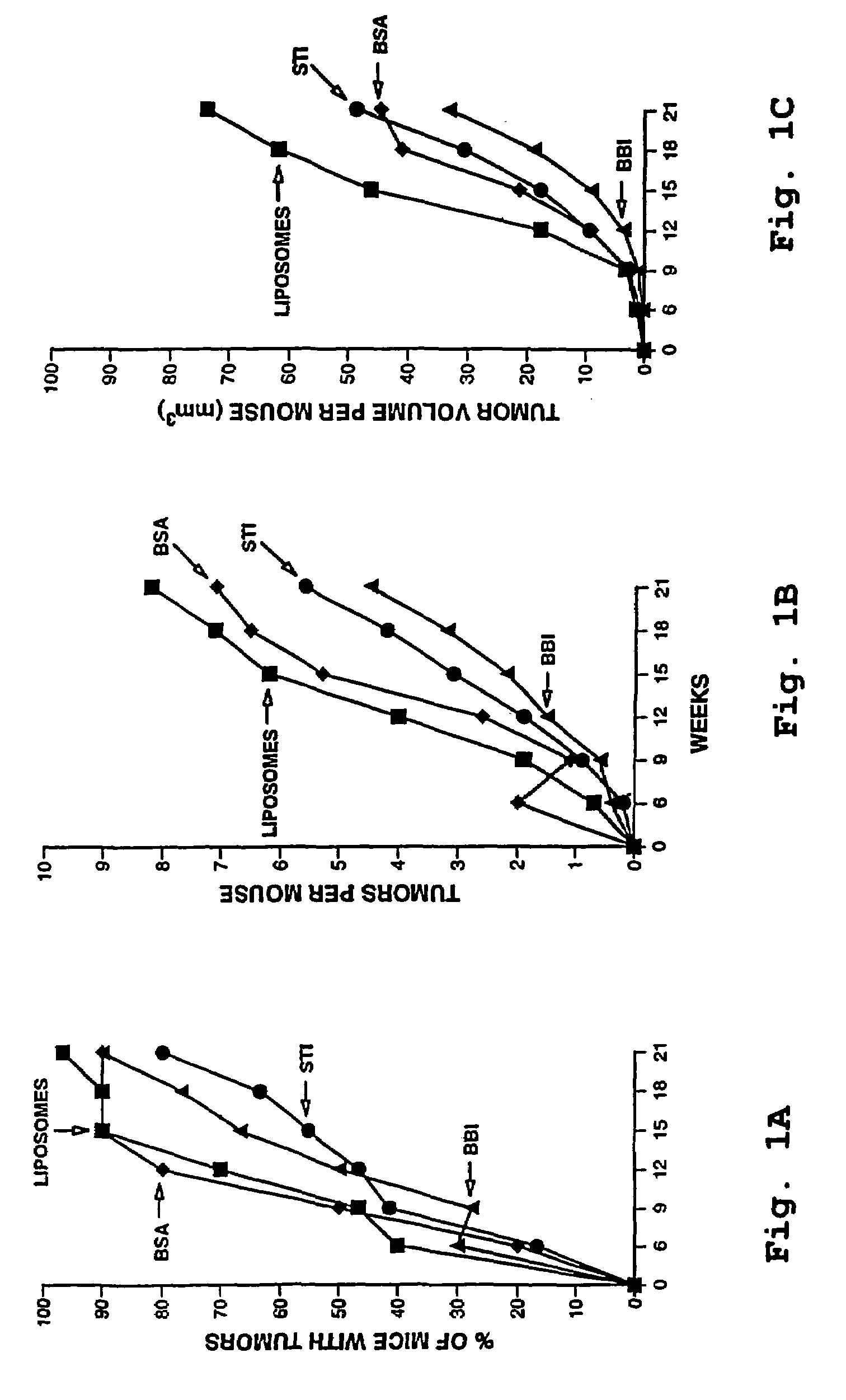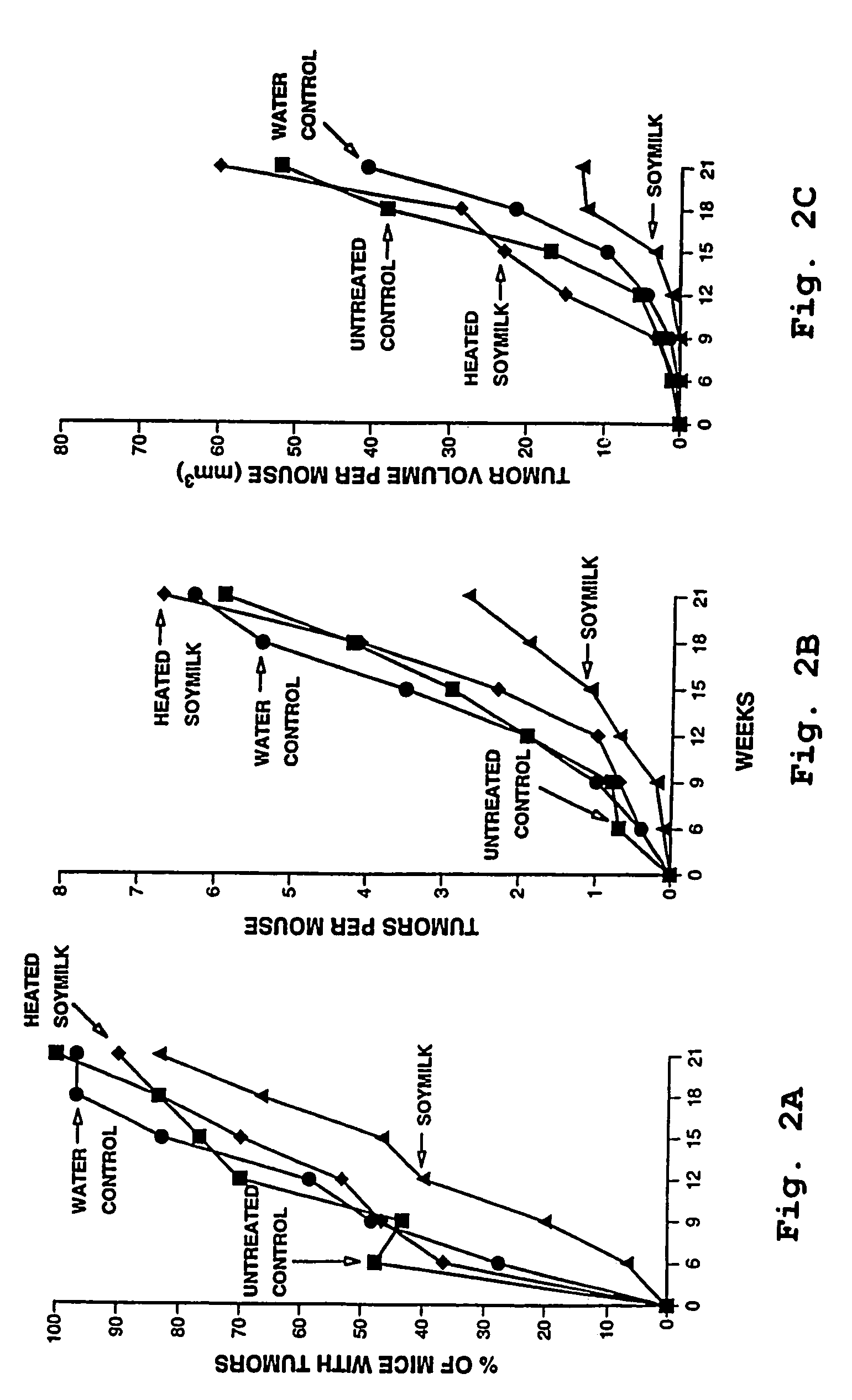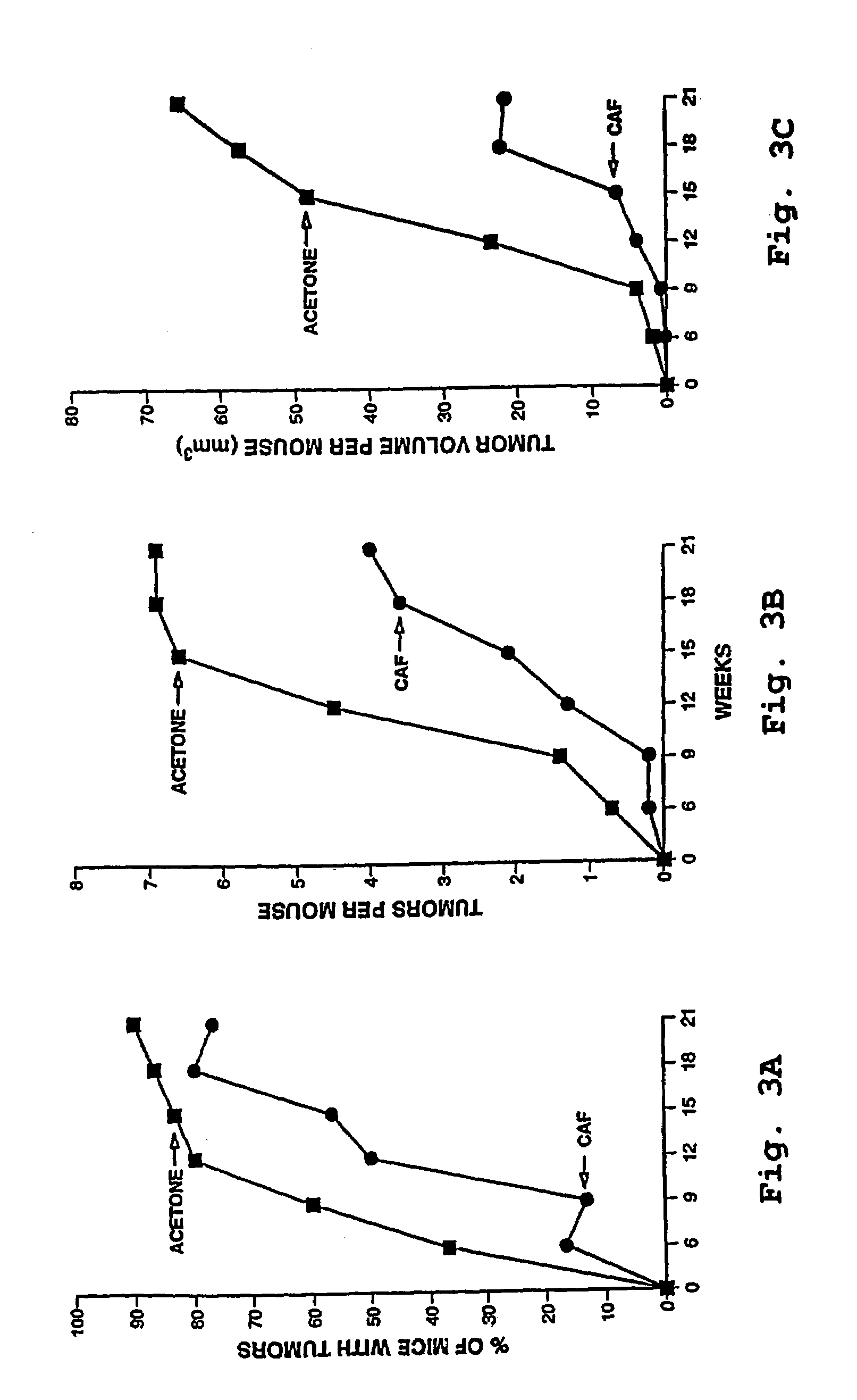Topical anti-cancer compositions and methods of use thereof
a technology of compositions and anti-cancers, applied in the field of topical anticancer compositions, can solve the problems of high medical costs, overwhelm the antioxidant capacity of cutaneous skin, and low mortality of nmsc, so as to reduce the risk of developing uv-induced cutaneous tumors, prevent the progression of cancer, and reduce the growth rate of uv-induced cutaneous tumors
- Summary
- Abstract
- Description
- Claims
- Application Information
AI Technical Summary
Benefits of technology
Problems solved by technology
Method used
Image
Examples
example 1
Soymilk Reduces UVB-Induced Tumorigenesis
[0082]Female SKH-1 mice, 6-7 weeks old, were purchased from Charles River Laboratories (Kingston, N.Y.) and were housed for at least one week before use. Mice were given water and Purina Laboratory Chow 5001 diet (Ralston-Purina, St. Louis, Mo.) ad libitum . Animal care was based on the “Guide for the Care and Use of Laboratory Animals”, NIH Publication No. 85-23. Ultraviolet B light (UVB) lamps (FS72T12-UVB-HO) were from National Biological Corp. (Twinsburg, Ohio). Mice were irradiated with UV lamps that emit both UVB (280-320 nm, 75-80% of total energy) and UVA (320-375 nm, 20-25% of total energy). The UVB dose was quantified with a Spectra 305 dosimeter from DaevIin Co. (Byran, Ohio). The radiation was further calibrated with a Research radiometer / photometer model IL1700 from International Light Inc. (Newburgport, Mass.).
[0083]Mice were irradiated with UVB light (30 mJ / cm2) for 25 to 30 seconds twice a week for 20 weeks. UVB irradiation wa...
example 2
Caffeine Reduces UVB-Induced Tumorigenesis
[0087]The experiment described in Example 1 was also performed using a topical caffeine treatment. Caffeine was purchased from Sigma (St. Louis, Mo.). Acetone was from Fisher Scientific (Springfield, N.J.). Mice were treated daily, five days a week with caffeine (1.2 mg) in 100 μl acetone or with 100 μl of acetone only. Experimental procedures and measurements were identical to those described in Example 1, and the two experiments were performed at the same time, using the same UVB-irradiated population.
[0088]FIGS. 3A-3C show that tumor progression following acetone treatment was very similar to that of the untreated group graphed in FIG. 2. The caffeine treated mice showed a marked delay in tumor progression, as evident from the tumor volume per mouse data in FIG. 3C. The additional parameters reported in Table 1 further support this observation of the beneficial effect of caffeine on tumor progression. The percentage of tumor-bearing beari...
example 3
Preparation of Soymilk from Soybean Powder
[0089]160 g of soybean powder (Sunlight Foods, Taipei, Taiwan) was added to about 1440 g of deionized water. The mixture was stirred at room temperature for about 1 hour. The mixture was then filtered through a sieve having holes of 75 μm diameter. The filtrate resulted in about 1.1 kg of soymilk.
PUM
| Property | Measurement | Unit |
|---|---|---|
| wavelength | aaaaa | aaaaa |
| diameter | aaaaa | aaaaa |
| weight | aaaaa | aaaaa |
Abstract
Description
Claims
Application Information
 Login to View More
Login to View More - R&D
- Intellectual Property
- Life Sciences
- Materials
- Tech Scout
- Unparalleled Data Quality
- Higher Quality Content
- 60% Fewer Hallucinations
Browse by: Latest US Patents, China's latest patents, Technical Efficacy Thesaurus, Application Domain, Technology Topic, Popular Technical Reports.
© 2025 PatSnap. All rights reserved.Legal|Privacy policy|Modern Slavery Act Transparency Statement|Sitemap|About US| Contact US: help@patsnap.com



